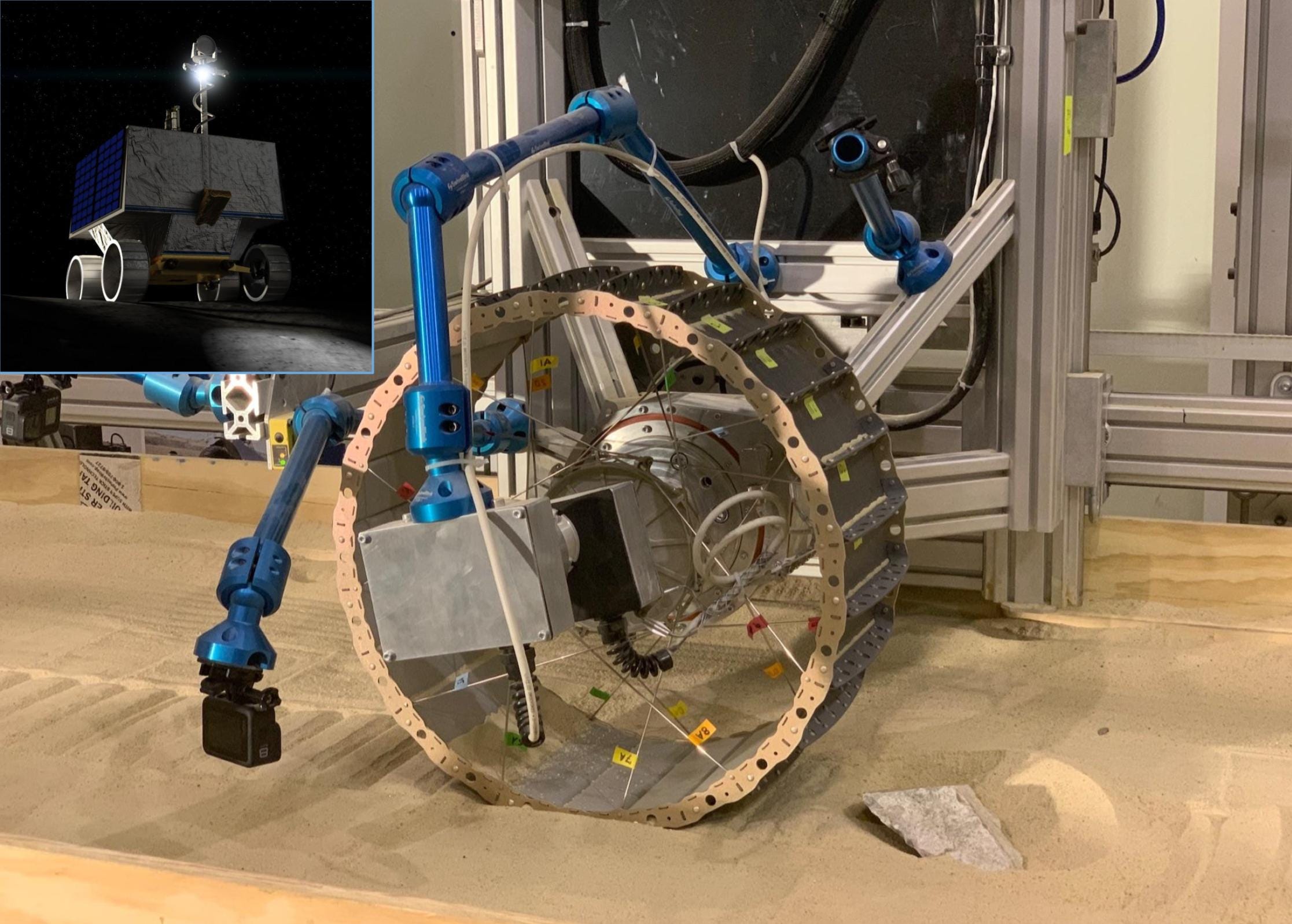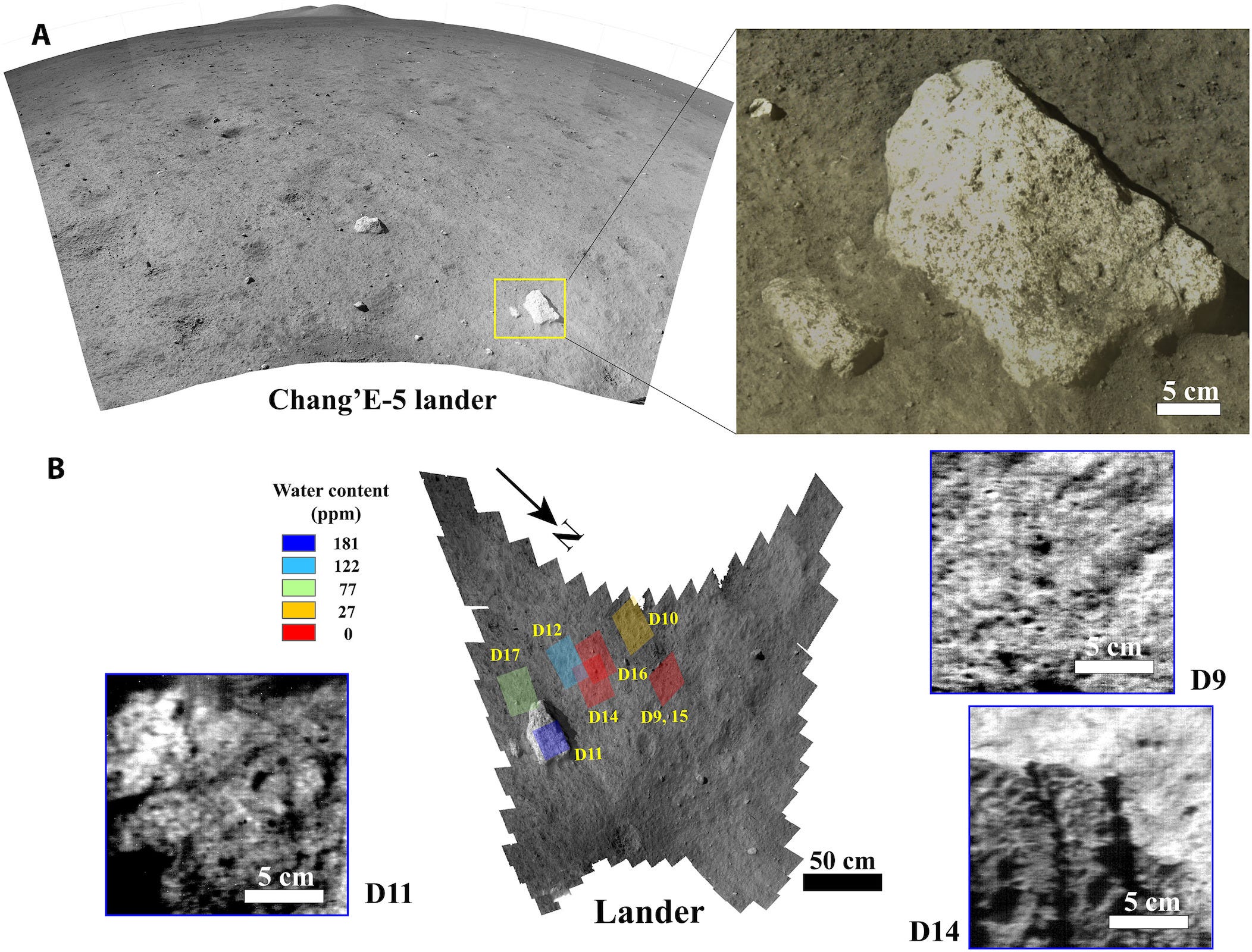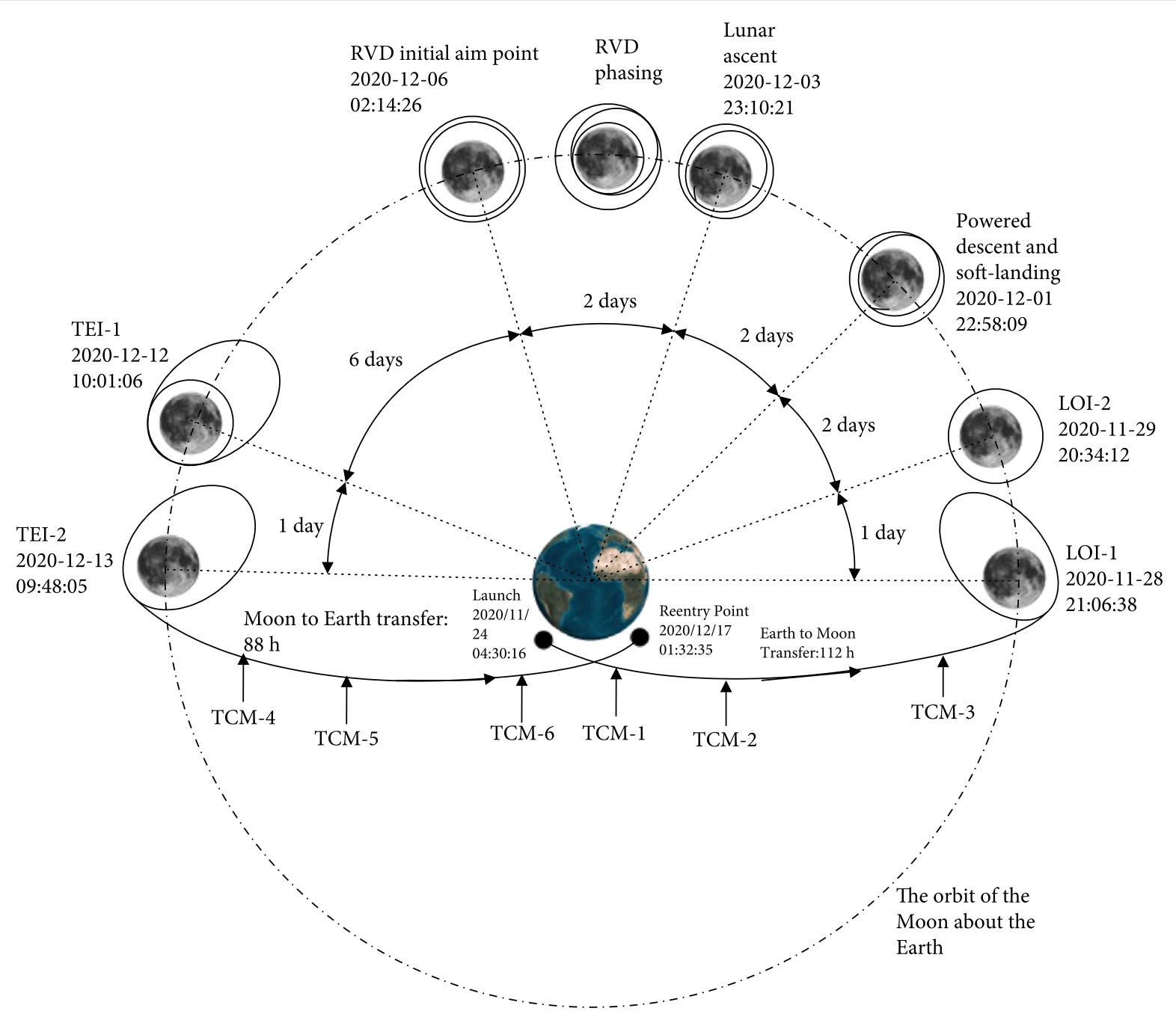Moon Monday Issue #59
NASA rigorously tests wheel design of its ambitious lunar rover; Amazon's Alexa to be on 1st Artemis Moon mission; more Chang'e 5 science results and mission details, and more lunar updates.
Highlight
NASA has progressed well on preparing its ambitious VIPER rover for launch in 2023 to map water ice and other such volatile resources in and around permanently shadowed regions on the Moon’s south pole. The agency has now shared that they had completed testing VIPER’s wheel design before the mission’s recent Critical Design Review.
One of those critical tests involved roving one wheel in a lunar soil simulant lab setup for more than 40 kilometers—over twice the distance its mission requires—in about three weeks. The wheel handled varying slopes and dealt with slips and sinkage, amid 196 combinations of sizes, shapes, and distribution of Moon-like terrestrial rocks, all simulating the breath of drive scenarios VIPER is likely to encounter on the Moon to reduce the chances of failure. NASA did detect minor weaknesses in the wheels during testing, which the mechanical design team has addressed.

This focus on the sheer agility of a planetary rover is unprecedented but called for by the VIPER mission’s needs. On top of dealing with the numerous challenges in any Moon mission, NASA is designing VIPER to power through one of the harshest planetary environments in the solar system. With temperatures during major investigations well below -180 degrees Celsius, a rocky terrain riddled with steep slopes, a near-horizon Sun causing long, moving shadows that the solar-powered rover needs to keep avoiding or face a freeze, NASA is sending VIPER to lunar hell.
To get its job done under such extreme circumstances, VIPER can traverse 15-degree inclines with ease, and even 25 to 30 degree slopes if need be. VIPER can drive sideways, diagonally, or move in any direction without changing where it’s facing to keep its solar panels pointed at the Sun. If VIPER gets stuck in fluffy soil, it can lift each of its wheels independently to dig into and sweep along the surface—a bit like swimming—to get out of it. To prevent lunar dust from damaging its wheel system or internals, NASA is wrapping VIPER in multiple protective layers.
NASA will begin constructing VIPER’s flight model in late 2022 at their Johnson Space Center, before launch by Astrobotic as part of the agency’s CLPS program in late 2023 on a SpaceX Falcon Heavy rocket.
Exploration
We learnt last month that NASA’s first Artemis mission, to send an uncrewed Orion spacecraft around the Moon and back, has been delayed from February 2022 to at least March. The delay is caused by one of the two engine flight controllers on the SLS rocket’s fourth engine failing abruptly during testing. Last week, engineers and technicians successfully replaced the faulty engine controller, and are now performing diagnostic checks so as to soon continue the fully stacked rocket’s integrated tests. NASA now intends to roll out the rocket to the launchpad to test fueling, defueling, and related procedures in late February, depending on the success of which the agency will set Artemis I’s target launch date, which is likely no earlier than April.
Related: Lockheed Martin has partnered with Amazon and Cisco to add their voice assistant Alexa and Webex video conferencing software respectively to Artemis I, in the form of a tailor-made tablet and associated radiation-hardened hardware on the Orion spacecraft’s center console. Collectively called Callisto, the system will use NASA’s Deep Space Network for Webex’s video conferencing and a local database onboard Orion for Alexa to function without an internet. Since Artemis I has no crew, operators will interact with Callisto remotely from the control center on Earth. Specifically with Alexa, the idea is that any crew interfacing with it should be able to access specific real-time mission telemetry data using voice alone. Callisto’s performance on Artemis I will allow for improvements on Artemis II, where actual crew will be present. NASA is also considering using similar technology for the U.S.-led Gateway lunar station.

In a New Year’s message shared on ISRO’s website on January 3, the agency’s Chairman K. Sivan has put up confusing information regarding Chandrayaan 3, India’s second attempt to land on the Moon after Chandrayaan 2’s surface mission failed in 2019. On one hand, the message says:
Chandrayaan-3 design changes incorporating and testing has seen huge progress. The mission could be launched by middle of next year.
The media has already run with this text, but the thing is the phrasing isn’t clear, especially when considering that a latter paragraph in the same document says:
If you look at the immediate task at hand this year, we have many missions to execute. […] In addition, we also have Chandrayaan-03, Aditya Ll , XpoSat, IRNSS and technology demonstration missions with advanced indigenously developed technologies on-board. I am sure that with your continued cooperation, support and enthusiasm, we will be able to achieve all the targets.
Having Chandrayaan 3 launch in 2023 would also contradict last month’s formal response to a query put forth to the Rajya Sabha—Indian equivalent to the U.S. Senate—that said Chandrayaan 3 is on track to launch in Q3 2022. While it’s entirely possible that Chandrayaan 3 is in fact delayed, and history isn’t on its side, I’d nevertheless wait for a clarifying statement from the ISRO Chief or a related new development to take place before being sure. If there indeed is a delay, it likely means that the testing phase, which has been consistently projected to go well, has hit a considerable bump.
In any case, we already know the Chandrayaan 3 lander will carry, among other experiments, a thermal probe and a seismometer to study the Moon’s interior, and that a rover onboard will have a pair of spectrometers to determine what the ancient lunar crust is made of. Being a repeat attempt of Chandrayaan 2’s surface part of the mission, the Chandrayaan 3’s landing region is expected to be in a lunar highland region too.
Science
China’s Chang’e 5 mission, which brought to Earth 1.7 kilograms of lunar samples from near a volcanic dome in December 2020, confirmed that the Moon was volcanically active 2 billion years ago, a fairly recent time on geological scales. However, as we discussed then, the extremely low water content and an unexpectedly low abundance of heat-producing elements in those samples suggested that there seems to have been no significant catalyst to have the Moon spewing out lava for so long after peak volcanism ended over 3 billion years ago. While we don’t know the answer to this mystery yet, another result from the Chang’e 5 mission is helping provide context.
A spectrometer on the Chang’e 5 lander found evidence of surface water in the lunar soil and a rock at the landing site (43.06° N, 51.92° W). While the soil’s water concentration is comparable to the samples—less than 120 parts per million—the rock stands higher at 180, something that can’t be solely caused by the solar wind. This means the Moon’s interior, the mantle in particular, is likely a source of that water, a hypothesis scientists say is supported by orbital observations. What likely happened is that the rock was part of a much older landform but got ejected to the Chang’e 5’ landing site at some point due to an asteroid/cometary impact. An implication of this result is that the larger region where Chang’e 5 landed may have higher concentrations of volcanism-aiding elements after all. In any case, the result provides geological context to analyze the Chang'e 5 samples themselves.

Related: Previously, in an open access paper, Chinese scientists provided juicy details and diagrams on the Chang’e 5 spacecraft’s guidance, navigation and control system used to successfully execute the complex robotic sample return mission. And now in another open access paper, more members of the team share details on Chang’e 5’s orbit design, including orbit design of lunar orbit rendezvous and docking for the orbiter and sample return modules, the orbit design to enable precision lunar landing, and the design of the Moon-to-Earth transfer orbit for getting the samples.

More Moon
I don’t generally listen to podcasts out of personal preference but when I do, I end up reading the transcripts. In any case, these three podcast episodes caught my eye last week:
- The Planetary Society on Artemis 1 Orion capsule recovery and the upcoming spacesuits
- Gary Cox on Orion’s imaging systems that will enable people worldwide to see the Earth and Moon from deep space during Artemis missions.
- A discussion on the promise of NASA’s CLPS program to send scientific instruments and missions on commercial landers. The CLPS part starts at about the 43 minute mark.
Dear readers, I’m publishing this one-of-a-kind Moon exploration newsletter for free since over a year now, with no ads. And it will stay that way. If you like my comprehensive global coverage of lunar exploration and science, support me to keep it going.
